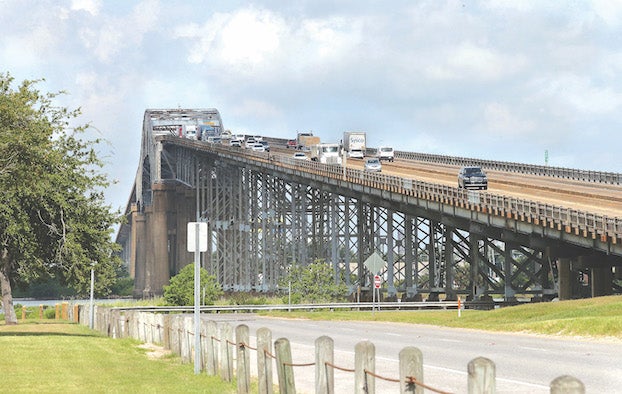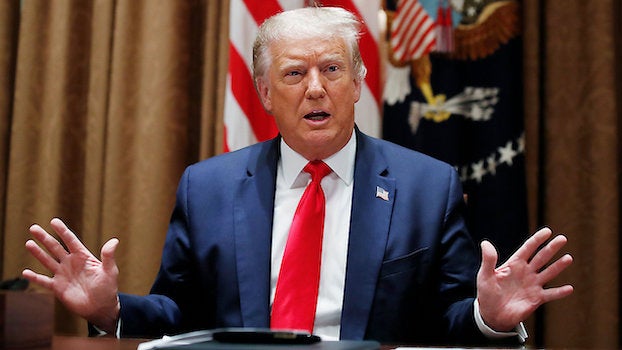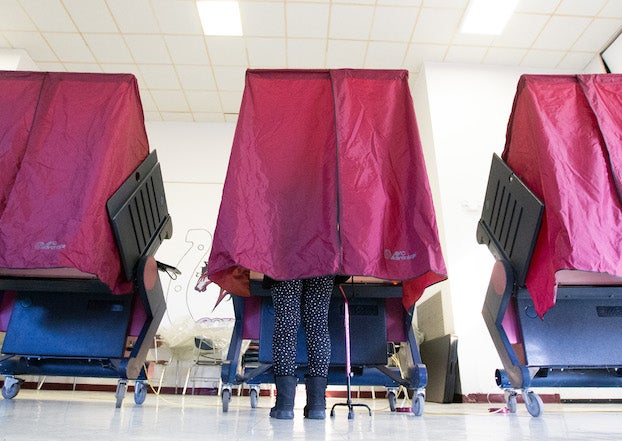I-10 bridge meeting Thursday at Civic Center
Published 4:57 am Wednesday, August 30, 2023

- (Donna Price / American Press)
The public meeting to discuss the Calcasieu River-Interstate 10 bridge — including its tolls and aesthetics — will be 4-7 p.m. Thursday, Aug. 31, at the Lake Charles Civic Center.
“The meeting will begin with an open house session from 4 p.m. to 6 p.m.,” said John Guidroz, public information officer for the Louisiana Department of Transportation and Development’s Southwest Louisiana region.
During this time, residents can view a continuous multimedia presentation on the project. Attendees can also visit stations, get questions on the project answered by DOTD and staff with Calcasieu Bridge Partners, and leave comments that will be compiled into the meeting record.
A question-and-answer session will follow the open house. Questions for the panel can be submitted during the open house and will be read to the panel by a moderator. The panel session will end at 7 p.m., according to Guidroz.
It was at the December 2022 public bridge meeting that toll charges and environmental impact were first presented. The latest toll calculations were released July 24. Tolls were set at 25 cents for autos with tags. Tolls for medium trucks with a toll tag were set at $2.55. Tolls for a large truck with a tag were set at $12.50 What constitutes a medium and large truck has not been established.
On Aug. 22, the Joint Transportation Committee heard from local legislators and truckers. In September committee members will vote in favor or against the Calcasieu Bridge Partners proposal, a public-private partnership for a cost of $2.1 billion and tolls, which can be raised with the consumer price index, and will be charged for 50 years.
Aesthetics
Computer-generated visuals that have appeared in the American Press, and were received from DOTD, might not look exactly like the finished bridge as proposed by CPB for $2.1 billion.
“Certain add-ons” such as aesthetic lighting and the faux cable look are not currently part of the project, according to statements from Secretary of the Department of Transportation and Development Eric Kalivoda, who spoke on the behalf of CPB at the Joint Transportation Committee hearing last week.
“However, if the state Legislature appropriates (additional) funding for these features that money could be used to add them to the project,” Guidroz said. “DOTD is working to calculate cost estimates associated with those extra features.”
At some point, conceptual bridge renderings included a bike and pedestrian crossing. (All meetings discussing plans and design were not made public or open to the press.) At the committee hearing, Kalivoda said it is against state law to have bicycle or pedestrian pathways on interstate highways. ADA restrictions would also have to be considered. Therefore, the concept for a new I-10 Lake Charles bridge does not include any plans for a bike/pedestrian crossing. This would increase the cost of the project beyond the $2.1 billion and 50-year of tolls.
Counting the costs
Only two P-3 bids were received, according to the DOTD. The company who was not selected has received a $2.75 million stipend for its work, something the secretary says is normal operating procedure for projects such as this.
Since late 2019, DOTD has been working with advisors and outside consultants it retained specifically for this project and a total of $37 million has been spent, of which more than $11 million was spent specifically on the P3 aspect, according to Guidroz. That includes technical documents and associated legal and financial advisory services.
“These services are typical for putting a P3 project together,” he said. “The remainder of the money was spent on things such as environmental, survey, geotechnical, railroad and utilities. These are aspects of the project that the state would have paid for anyway.”
If the CBP proposal is not approved, it will also receive a $2.75 million stipend, the state secretary said in the committee hearing. At the Joint Transportation committee hearing, Kaliovda said each firm spent roughly $10 million of their own time and money. Expenses included preliminary design, securing financing, legal contracts, conducting traffic and revenue forecasts. Kaliovda said the public should understand that this is a lot of risk these firms take by submitting proposals for this type of practice.
Transportation hearing takeaways
State Rep. Phil Tarver was one of five local legislators who attended the hearing. He told legislators about the lack of transparency surrounding the proposal and DOTDs failure to apply for available grants. Other delegates who attended and supported those claims were Reps. Brett Geymann and Les Farnum and Sens. Jeremy Stine and Mark Abraham. Abraham said he had been neutral on the matter until the hearing. Stine said he had talked to the lead investing company and it said the bridge could be built for $1.7 billion.
Tarver said the hearing is the first time he and other local delegates have heard of the potential for a $100 to $200 million bridge rehab project, a less expensive alternative to the P-3, that, if nothing else, would give the state and its citizens time to come up with a more suitable plan.
“From a safety perspective, the bridge left in its current state cannot be expected to last for decades,” Guidroz said. “This rehabilitation work on the existing bridge would simply extend its lifespan so that it would remain open and safe for travel over the long term. Another primary goal of the work would be to ensure that the bridge would not have any weight restrictions.”
Guildroz said at this time, it is unclear what exactly would be included in a major rehabilitation of the existing I-10 bridge. Some work could include replacing the bridge deck, median and outside barrier rail, isolated structural components, as well as cleaning and repainting the structure. And in-depth inspection would be done to determine specifically the scope of work needed.
However, the work that would be done would depend on the amount of available funding, cost of supplies and inflation. The existing bridge could not be widened.
“The state will do as much as possible to get the existing bridge rehabilitated should the P3 proposal end up being rejected,” Guidroz said.





